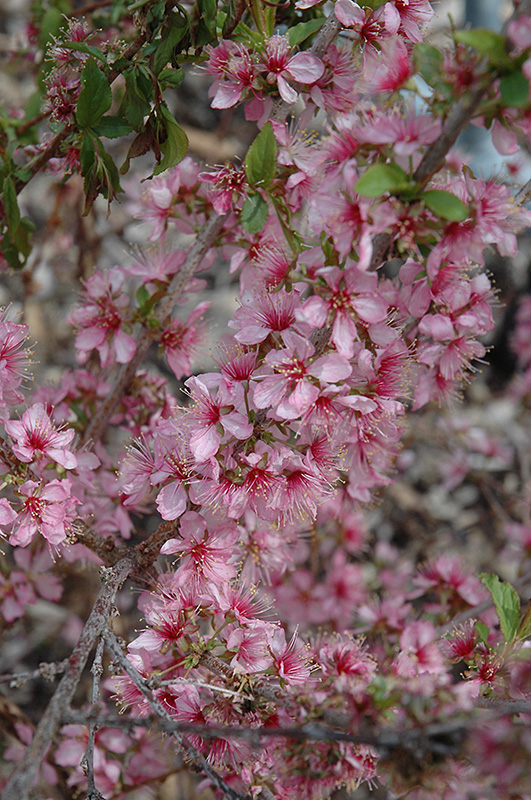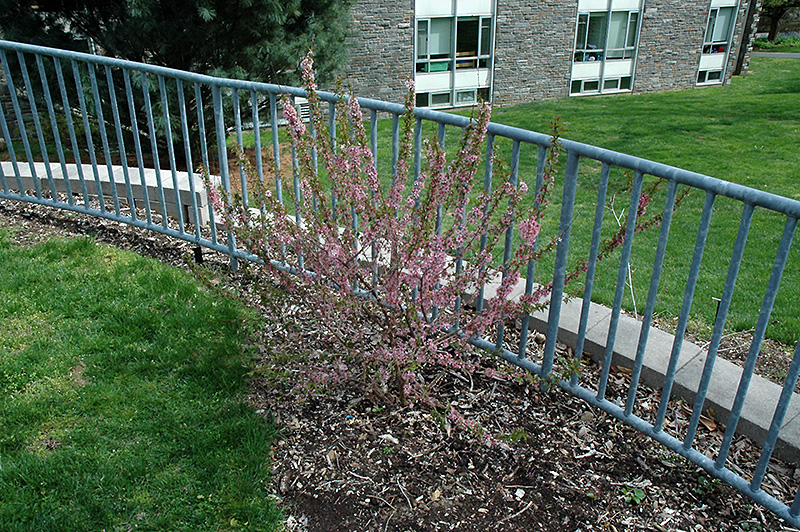Height: 5 feet
Spread: 4 feet
Sunlight:
![]()
Hardiness Zone: 5b
Other Names: Pacquemont Cherry, Afghan Bush Cherry
Description:
A dwarf ornamental shrub featuring showy pink flowers with deep red centers, followed by small tart cherries in summer; low growing and wide spreading; very adaptable
Ornamental Features
Dwarf Bush Cherry is covered in stunning fragrant shell pink flowers with red eyes along the branches in early spring before the leaves. It has green deciduous foliage. The pointy leaves turn an outstanding yellow in the fall. The fruits are showy plum purple drupes displayed in mid summer. The fruit can be messy if allowed to drop on the lawn or walkways, and may require occasional clean-up.
Landscape Attributes
Dwarf Bush Cherry is a multi-stemmed deciduous shrub with an upright spreading habit of growth. Its relatively fine texture sets it apart from other landscape plants with less refined foliage.
This is a relatively low maintenance shrub, and is best pruned in late winter once the threat of extreme cold has passed. It is a good choice for attracting birds to your yard. It has no significant negative characteristics.
Dwarf Bush Cherry is recommended for the following landscape applications;
- Mass Planting
- Hedges/Screening
- General Garden Use
Planting & Growing
Dwarf Bush Cherry will grow to be about 5 feet tall at maturity, with a spread of 4 feet. It tends to fill out right to the ground and therefore doesn't necessarily require facer plants in front, and is suitable for planting under power lines. It grows at a medium rate, and under ideal conditions can be expected to live for approximately 20 years. This is a self-pollinating variety, so it doesn't require a second plant nearby to set fruit.
This shrub should only be grown in full sunlight. It does best in average to evenly moist conditions, but will not tolerate standing water. It may require supplemental watering during periods of drought or extended heat. It is not particular as to soil type or pH. It is highly tolerant of urban pollution and will even thrive in inner city environments. This species is not originally from North America.
Disclaimer - This Plant Finder tool is an online resource representing many of the varieties that we carry over the course of the season, and is intended for informational purposes only. Inventory varies seasonally, so we cannot guarantee that every plant will be in stock at all times - please contact the store directly for current availability. It does not include our entire selection of plants, so be sure to visit our store to see varieties that may not be represented on this list.


